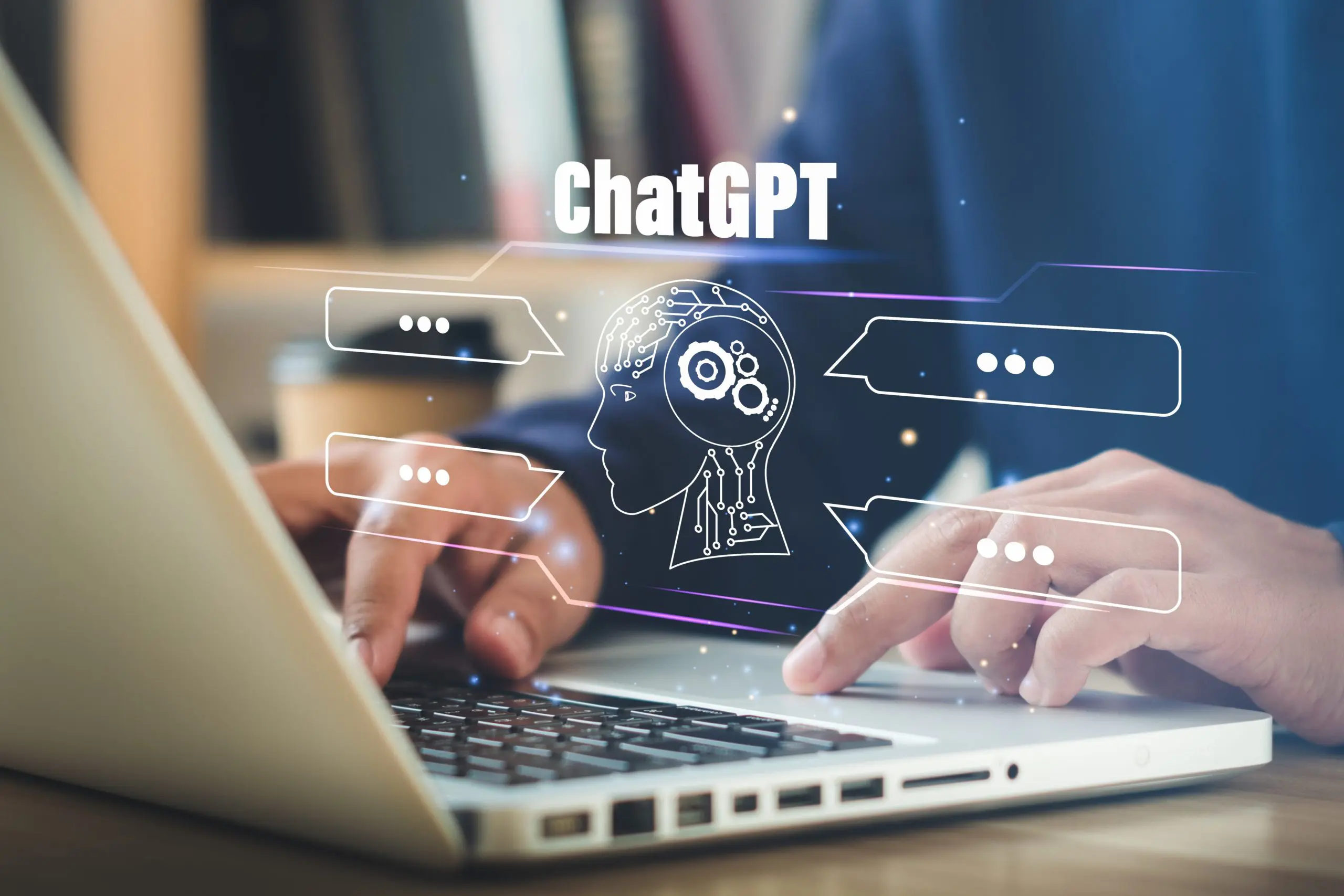
Beware, there is a new AI bot prowling the ether: ChatGPT. Have you heard the buzz around it? You would do well to take notice. As the use of artificial intelligence (AI) tools grows, people wonder about the risks and difficulties that could come with it. There’s plenty to worry about. Fortunately, in the right hands, ChatGPT can also be used to mitigate the risks.
What is ChatGPT?
ChatGPT (Chat Generative Pre-trained Transformer) is a language-generating AI chatbot created by OpenAI, an AI research and deployment company. ChatGPT’s vast capabilities have captivated users, attracting more than 13 million visitors every day, as noted by Demand Sage, Inc.
In Dark Reading, Ketaki Borade, a senior analyst with Omdia, explains that ChatGPT is unique compared to other AI language generators in that it can write code in different languages, debug code, draft an essay, or explain complex topics in multiple ways. It holds the promise of aiding IT and security teams in their efforts to become more efficient, but this potential is not without a price. The features that make ChatGPT a useful tool can become dangerous when wielded by nefarious actors to create malware, phishing campaigns, and social engineering scripts, leading to untold destruction and chaos.
According to CNET, ChatGPT has guardrails to identify “’inappropriate’ requests,” but bad actors have schemed ways to get around the security protocols, bringing cybersecurity professionals to high alert. This article discusses how ChatGPT could be used to strengthen your cybersecurity posture and the risks and challenges you’ll be facing down.
Using ChatGPT to enhance your cybersecurity stance
ChatGPT can be used to improve a cybersecurity posture in a number of ways, including:
- Threat intelligence analysis: As explained by The Data Visualization Catalogue Blog, ChatGPT is trained on a massive, human-generated dataset that can be refined into valuable insights. It can rapidly analyze large amounts of data from a variety of sources, such as news sites, social media, and other online platforms, to identify potential threats to an organization’s cybersecurity. It can also provide insights into new and emerging threats, which can help organizations proactively protect themselves.
- Training and awareness: ChatGPT can be used to create training programs to educate employees on cybersecurity best practices, including phishing awareness, password management, and other security protocols, and help employees better understand potential threats.
- Incident response: In the event of a cybersecurity incident, ChatGPT can be used to quickly identify the root cause of the issue and provide suggestions about how to contain and remediate the problem. It can also help automate certain incident response procedures, such as isolating compromised systems and restoring backups.
- Risk assessment: ChatGPT can be used to assist in conducting risk assessments and identifying vulnerabilities in an organization’s IT infrastructure by providing insights and analysis based on the available data. It can also offer recommendations on improving security controls and reducing the risk of cyberattacks.
- Monitoring and alerting: ChatGPT can be used to assist in monitoring network activity and detecting potential security incidents by analyzing network traffic and identifying patterns of suspicious behavior. It can also provide alerts when it identifies suspicious behavior or detects anomalies that may indicate a security breach.
Overall, ChatGPT’s ability to quickly process and analyze massive amounts of data can help organizations improve their cybersecurity posture by providing valuable insights and support. However, it’s important to remember that while ChatGPT can assist in cybersecurity management, it should not be relied upon as the only method for protecting your enterprise. Organizations should use ChatGPT with other cybersecurity tools and practices to ensure a comprehensive and accurate security strategy.
Reasons for concern regarding the application of AI to cybersecurity
While AI has the potential to improve cybersecurity in many ways, there are also some reasons for concern regarding the application of AI to cybersecurity. Here are some of the most common concerns:
- Bias in AI algorithms: AI algorithms can be biased based on the dataset they are trained on, leading to discriminatory or unfair outcomes. If AI algorithms are used to make decisions about cybersecurity, there is a risk that these decisions will be biased, which could lead to vulnerabilities or false positives.
- Lack of transparency: AI algorithms can be complex and difficult to understand, making it challenging for security analysts to identify the reasoning behind the AI-generated alerts or decisions. This lack of transparency can make it tricky for security analysts to validate the accuracy of AI-generated alerts or to understand the reasoning behind AI-generated recommendations.
- Adversarial attacks: Adversarial attacks are attacks on AI systems designed to manipulate or deceive the AI algorithm. These attacks can be used to bypass cybersecurity defenses, and they are becoming increasingly common as AI is more widely adopted.
- Dependence on training data: AI algorithms require large amounts of training data to operate effectively. If the training data is incomplete or biased, the AI algorithm may not be effective at identifying cybersecurity threats or may be more prone to false positives or false negatives.
- Cost: Developing and implementing AI systems can be expensive, which may make it challenging for smaller organizations to invest in AI-based cybersecurity solutions.
It’s important for organizations to be aware of these concerns and to take steps to mitigate the risks associated with AI-based cybersecurity solutions. This can include implementing oversight mechanisms to identify and address bias, ensuring transparency in AI-generated alerts and decisions, and incorporating human oversight to validate the accuracy of AI-generated alerts and decisions.
Is that a threat? Ways bad actors manipulate ChatGPT
ChatGPT is designed to assist with a wide range of cybersecurity-related tasks. However, there are some ways that people could use ChatGPT that pose a cybersecurity threat. Here are a few examples:
- Social engineering and phishing attacks: ChatGPT can be used to generate realistic-sounding messages and emails, which could be used as part of a social engineering or phishing attack. For example, an attacker could use ChatGPT to generate a psychologically manipulative email that appears to be from a trusted source, tricking the recipient into providing sensitive information or following a malicious link.
- Malware and Ransomware distribution: ChatGPT could be used to create engaging malware and ransomware code. Malware (e.g., viruses, Trojan horses, attack scripts, backdoors, worms, time bombs, or malicious active content) can be used to breach, disrupt, or damage a system. Ransomware can be used to encrypt a victim’s files until the victim pays a ransom in exchange for the decryption key.
- Data theft: ChatGPT could be used to generate seemingly innocuous messages to gain access and steal sensitive data from an individual or an organization.
- Automated attacks: ChatGPT could be used to generate automated attacks against systems or networks. For example, an attacker could use ChatGPT to create a series of commands that could be used to automate a distributed denial-of-service (DDoS) attack.
Take note that these are all potential misuse cases for ChatGPT, yet the vast majority of people using ChatGPT are doing so for legitimate purposes. Of course, organizations should be aware of the risks and develop strategies to mitigate them, such as implementing security controls to prevent social engineering attacks, malware distribution, ransomware attacks, data theft, and phishing attacks and ensuring that their systems are resilient to automated attacks. Additionally, organizations should consider using AI-based security solutions to help detect and prevent these types of threats.
The good news
While ChatGPT can be abused by threat actors to develop more advanced and sophisticated attacks, this same tool can be used to protect your enterprise. To defend against the threats that ChatGPT poses, organizations should focus on learning to use existing AI tools and build new ones to analyze and interpret immense amounts of data. Organizations must proactively implement behavioral AI-based tools to detect AI-generated attacks and protect against cybersecurity threats. As technology changes, security measures must also change to keep up with new cyber threats lurking in the shadows.
It is important to remember that AI has the potential to help improve cybersecurity. Of course, to be well defended against cybersecurity threats, you need both human intelligence and machine intelligence.
At VirnetX, we can help you build your defenses against bad threat actors. Our software and technology solutions are designed to provide the security platform required by next generation Internet-based applications. By combining our tools with emerging tools, your cybersecurity posture will be stronger than ever.
Matrix enforces access policy controls and enables real-time network management to protect cloud or on-premises applications from threats. The platform safeguards applications and contemporary remote workforces from sophisticated hackers and mitigates threats by enabling corporate applications to be invisible to unauthorized users.
For more information, please visit https://virnetx.com/.
About VirnetX
VirnetX Holding Corporation is an Internet security software and technology company with patented technology for secure communications, including 4G LTE and 5G security. VirnetX’s software and technology solutions, including its secure domain name registry and Gabriel Connection Technology™, are designed to facilitate secure communications and to create a secure environment for real-time communication applications such as instant messaging, VoIP, smartphones, e-readers, and video conferencing. The Company’s patent portfolio includes over 200 U.S. and foreign granted patents, validations, and pending applications. For more information, please visit www.virnetx.com.





